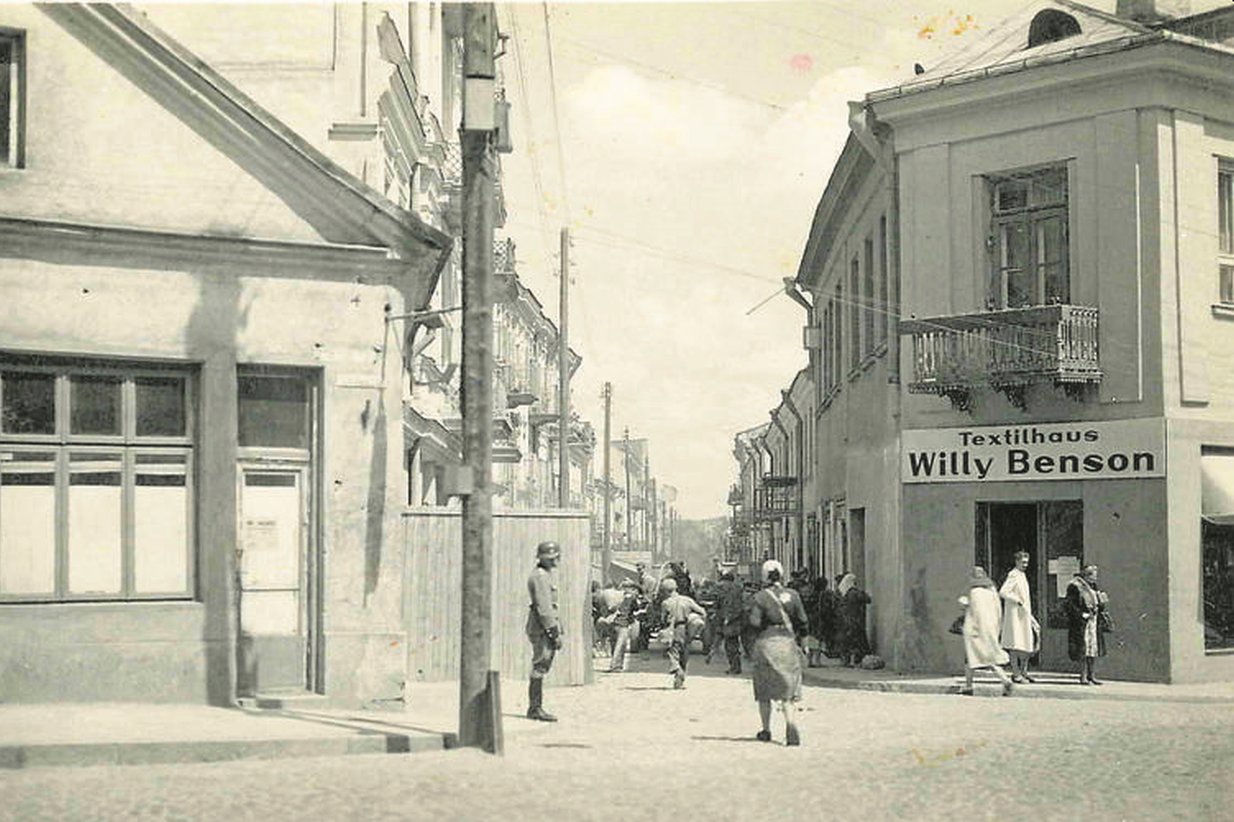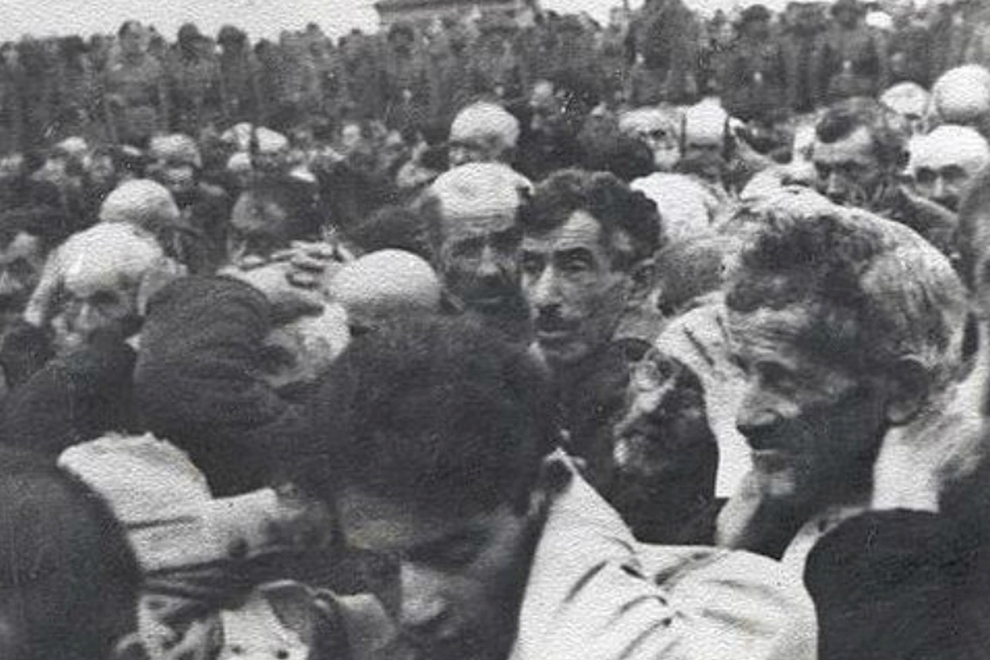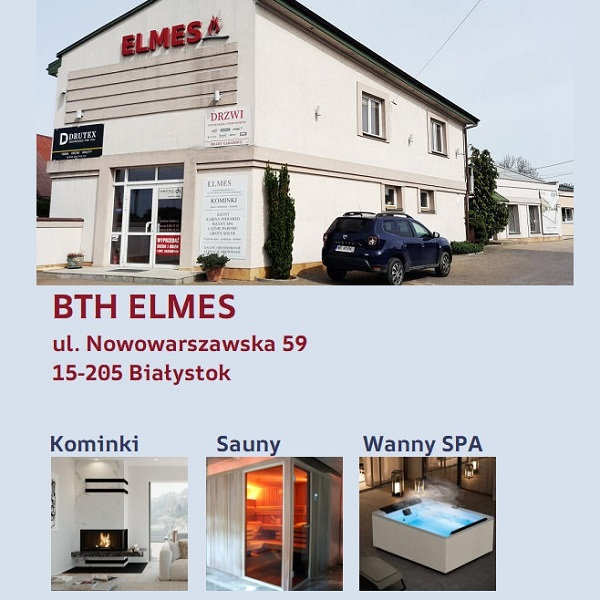June 27, 1941, is a date that has become a permanent part of Białystok’s (Poland) history. It was a day when the German occupiers of Poland committed an unimaginable atrocity. They brutally massacred people simply because they were Jews. They gathered around 800 people into the great synagogue located on Bożnicza Street (now the back of Suraska Street) and then set the building on fire. The heroic actions of Józef Bartoszka led to the survival of 29 people. The caretaker took advantage of the Germans’ inattention and opened the side door of the burning building. At the last moment, people crowded in the vestibule managed to escape. During this time, the occupiers were shooting at Jews who were fleeing from wooden houses, which also caught fire shortly afterward.
“…when the Germans came looking for men – I fled to another room, and when I hid, they took my brother-in-law, Aron Zelmanowicz. My sister ran after her husband. They were taken to the synagogue at the corner of Suraska – Szkolna Street. We watched from the attic of the house where we were hiding. There were many people with me. (…) When the synagogue was filled with people – I saw the Germans close the exits, surround the building, and set it on fire…” – this is a fragment of the eyewitness’s account. The fragment comes from Kurier Poranny.

On that day in Białystok, the Germans killed over 2,000 people. They burned the synagogue, the Schulhof district, and many buildings on Kościuszki Market, Suraska, Sienny Market, as well as what they encountered on Legionowa and Akademicka Streets. In the following days, the Germans continued the mass murder of Jews. Time and again, they conducted shooting actions. On July 3, they killed 200 people, on July 12 – 5,000 people, and on July 13 – 300 people. The murders were carried out by soldiers of police battalion No. 309, commanded by Major Ernst Wies, and battalions 316 and 322 under General Erich von dem Bach-Zelewski. By July 12, nearly 8,000 people had been murdered. Two weeks later,
Bialystok (Poland) Ghetto

On July 26, the ghetto was established in the city. Nearly 20% of all Jews in the city were killed. By order of the German occupiers, Jews had to wear Stars of David on their clothing from September 1, 1941. “A black outline of a six-pointed star the size of a hand on a yellow background with the inscription Jude must be sewn on visibly and worn on the left side of the chest.” This regulation, in line with the Nuremberg Laws, applied to all Jewish citizens from the age of six. Jews were not allowed to appear in public without the star. Anyone who tried to hide it under a scarf or bag had to face severe penalties from the Gestapo, who were vigilant about this.
Poles delivered food to the Jews in the ghetto because the Germans organizing ghettos throughout Podlasie provided starvation rations. Food was hardest to come by in Białystok. However, Bolesław, Henryk, and Józef Sokołowski, as well as Witold Maksymowicz, played an essential role. They bought food in nearby villages and brought it to their homes in Białostoczek, and then the Jews who were removing waste from the ghetto secretly packed the donated food into a hidden, double-bottomed tanker.
There were many more Poles delivering food to the ghetto in various ways. It was most often done through illegal trade. It is worth mentioning that Jews managed to bring cattle into the ghetto by bribing a German soldier. The transfer point was located on Smolna Street (near Jurowiecka). It is worth noting that some Poles were sentenced to death for delivering food. The Germans killed a boy in the yard on Sienkiewicza Street. A woman who tried to force the fence on Kościuszko Market was also killed. A man who managed to get to the ghetto marketplace on Częstochowska Street was also killed.
Examples of heroic deeds by Poles in Podlasie villages can also be multiplied. There, sometimes large families risked death but hid Jews. Poles created special buildings, hidden rooms, and even transported Jews by boat across the Biebrza River so they could wait for better times hidden in swampy forests where the Germans could not reach them!
Transfer of the city
1941 was the last year when the multicultural, multireligious, and multinational Polish Republic, although under occupation, still existed. The tragic fate of our country was sealed by the Germans, who that year began the “final solution to the Jewish question,” which involved the physical extermination of Jews. The Germans occupied territories from the USSR – with Ukraine, Lithuania, Belarus to Poland. In criminal, active cooperation in their territories, countries such as Slovakia, France, and Norway participated. Romania, Bulgaria, and Hungary partially cooperated as well. It is worth emphasizing that Italy and Denmark categorically refused to cooperate in this matter. Finland and Albania were also safe havens for Jews.
In 1939, Białystok, after a few days from the German invasion of Poland, was under German occupation. Then, when the USSR attacked Poland from the other side on September 17, both countries agreed, and in Branicki Palace, the Germans ceremoniously handed over the occupation of Białystok to the USSR. It is worth adding that there was an important railway junction here, which impacted transport, crucial during the war. Although the seizure of territories was not positive, the Jews had relative peace because the USSR, as a union of many nations, did not persecute Jews.
After democratically electing Hitler to power, Germany had racism and anti-Semitism in its program. We emphasize this not to belittle democracy but to show clearly that the hell in Europe was caused not by mythical “Nazis” but by Germans who democratically elected Hitler to power and supported his policies. The Germans’ re-entry into Białystok in 1941 was the beginning of the tragedy of the Jews, who were the majority in Białystok.
The uprising and liquidation of the Ghetto

On August 16, 1943, a building (already on Jurowiecka Street) witnessed the liquidation of the ghetto. The night before the German action, the moon shone beautifully over the city. In the morning, the Germans hung posters throughout the ghetto, informing them of the deportation of the entire ghetto population to work in the Lublin region. The ghetto area was surrounded by the army. At the fence of the ghetto on Smolna Street, right next to Jurowiecka, the Jews organized a self-defense point. Over 100 young people armed with rifles, revolvers, and even one machine gun. They also had homemade grenades, axes, hammers, knives, and Molotov cocktails. The plan was to set fire to the ghetto fence and then try to escape. When the fence burned down, the Jews saw a German tank and gendarmerie. No one managed to escape. A few hours later, a small boy unexpectedly threw a light bulb filled with hydrochloric acid in the face of a German officer, blinding and injuring him. Near Ciepła Street, adjacent to Jurowiecka, a real massacre began. The Germans shot at the crowds waiting for deportation at the gate. The boy who threw the light bulb was immediately killed. The Germans fired from several sides. The Jewish fighters tried to fight, but they had no chance. However, in the battles during the liquidation of the ghetto, 100 Germans lost their lives, and many were injured.
The Germans murdered about 800 people in the ghetto. Another 30,000 were sent to the German extermination camps in Treblinka and Auschwitz-Birkenau. In Białystok, the Germans created a real hell during two years of occupation. After the war, only a few hundred Jews lived in Białystok. Before the German occupation, there were about 50,000.




